8 Chugoku Dishes, from Hiroshima Okonomiyaki to Izumo Soba

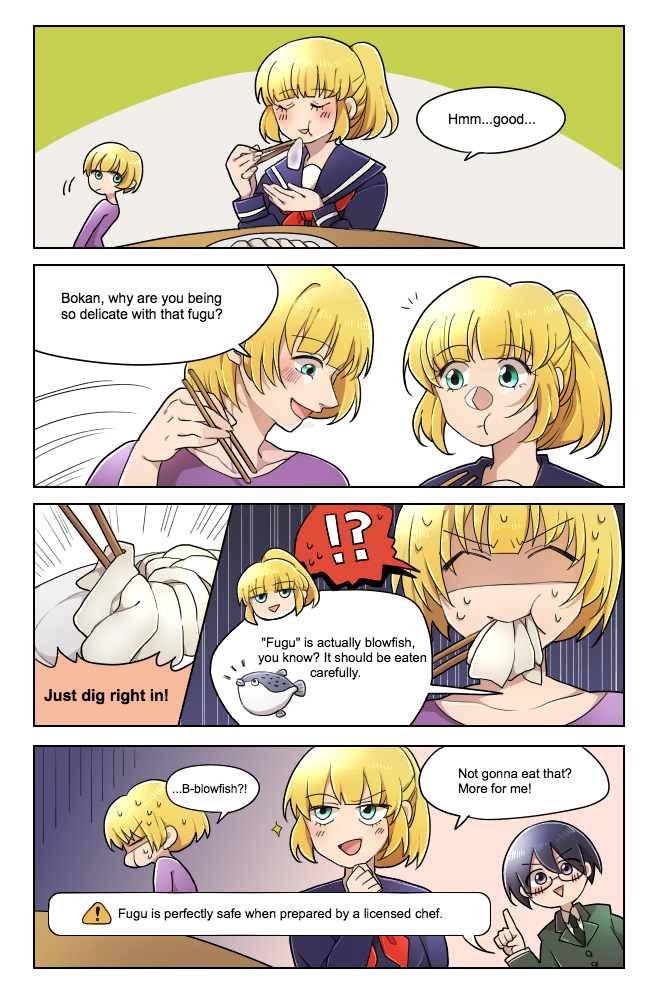
The Chugoku region, located on the western part of Japan’s main island of Honshu, may be some distance away from the bigger cities of Tokyo and Osaka, but it has its own share of unforgettable sights and tastes. Chugoku’s sightseeing attractions range from the enigmatic sand dunes of Tottori to the solemn peace memorial of Hiroshima and the picturesque Korakuen Garden in Okayama—one of the top three most beautiful gardens in Japan. The region’s five prefectures—Hiroshima, Yamaguchi, Shimane, Tottori, and Okayama—are home to amazing local dishes that offer a taste of excellent local vegetables, tofu, and fresh seafood from the Sea of Japan to the north, and the Seto Inland Sea to the south. Here are 8 local dishes that offer a delectable taste of the Chugoku region.
8 Chugoku Foods, 8 Delicious Reasons to Visit the Chugoku Region
Hiroshima Okonomiyaki (Hiroshima)
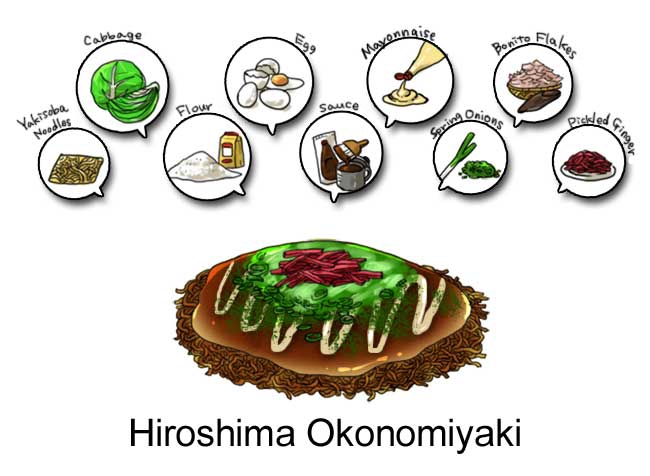
Okonomiyaki is a savory pancake from western Japan that consists of sliced cabbage, seafood, and egg mixed in batter and cooked on an open griddle. Hiroshima Okonomiyaki is the Hiroshima region’s version, with differences in the ingredients and the way the pancake is cooked. Hiroshima Okonomiyaki includes a layer of yakisoba noodles and a whole fried egg. To cook Hiroshima Okonomiyaki, rather than mixing all the ingredients together with the batter, the ingredients are cooked in layers. Enjoy it topped with dark and fruity okonomiyaki sauce, Japanese mayonnaise, and bonito fish flakes.
Izumo Soba (Shimane)
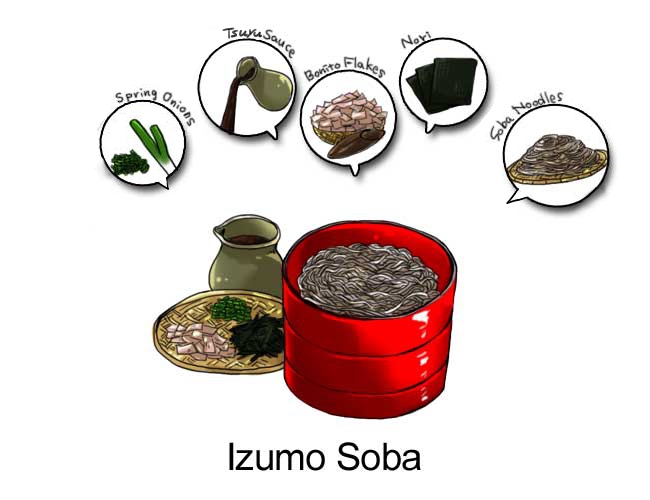
Izumo soba from the Shimane prefecture is a type of soba buckwheat noodle made from whole unhulled buckwheat seeds. More nutritious than regular soba noodles, Izumo soba have a nutty flavor and firm texture that make them irresistible to eat. The most common way to enjoy Izumo soba is in a set of stacked bowls called “warigo”. The stacked bowls each contain noodles, and are accompanied by a plate of condiments such as grated daikon, spring onions and bonito flakes, and a flask of sauce called “tsuyu”. The condiments are added to the noodles and then the tsuyu is poured over. Once the top bowl is almost finish, the entire contents are turned into the next bowl in the stack, with more condiments and sauce added to taste. This process is repeated again for the third bowl of noodles. After trying the delicious and novel Izumo soba, you may not want to go back to eating the regular kind!
Fruit Parfait (Okayama)
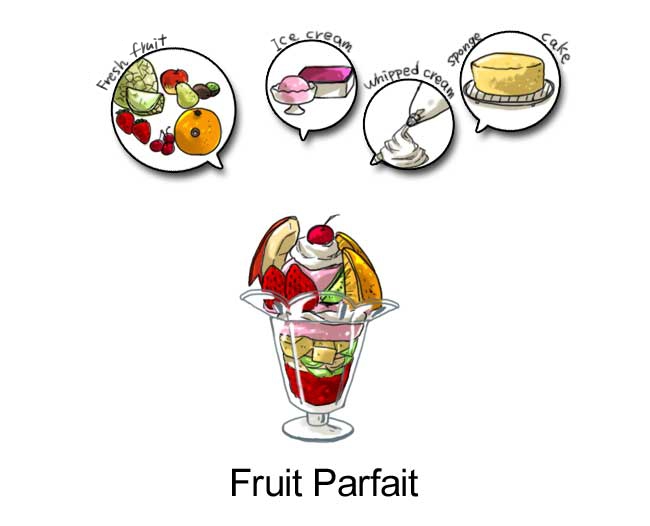
Dubbed “the sunny land” for its mild weather with very little rain, Okayama is one of the top fruit-producing prefectures in Japan. Many different varieties of grapes and peaches are grown here—in particular, white peach, Muscat grapes, and pione grapes. It’s no wonder then that the favorite local dessert is fruit parfait made with freshly-grown fruits from Okayama. Enjoy a variety of fruit parfaits in Okayama, which may use any mixture of sliced seasonal fruits, ice cream, whipped cream, cubes of sponge cake, and crunchy corn flakes.
Bara-Zushi (Okayama)
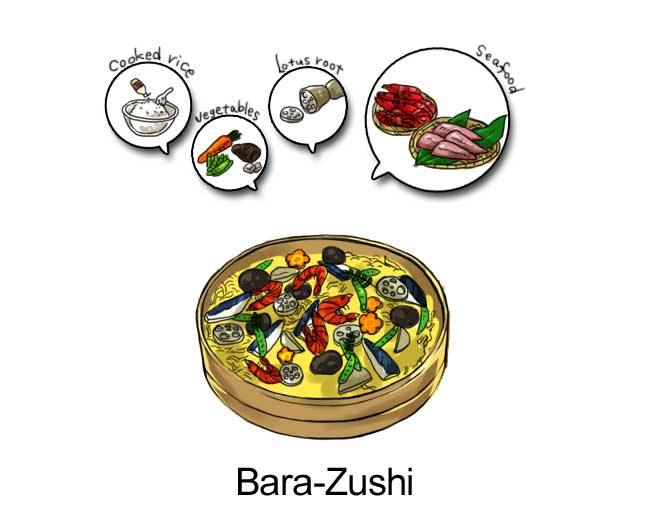
Bara-zushi is the traditional Okayama-style sushi that highlights various ingredients from the Chugoku mountains and sea. It consists of sushi rice topped local fish such as Spanish mackerel, dried tofu, and fresh and pickled vegetables like lotus root and kanpyo (dried gourd). The dish originated during the feudal period when fish was a precious commodity that couldn’t be enjoyed by commoners, so people would hide the fish under a mound of vegetables. Since then, bara-zushi has become a popular homemade food to eat during celebrations as the colorful local vegetables make it a perfect dish for festive occasions.
Matsuba Gani (Tottori)
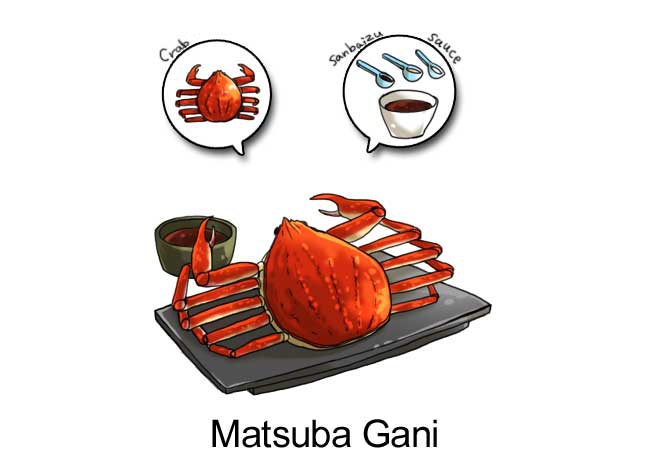
Tottori prefecture is located along the Sea of Japan, giving it access to some of the finest snow crab in the country from November to March. The winter delicacy of Tottori is adult male snow crab, known as “matsuba gani”, which is prized for its chewy, delicately flavored meat. One of the best ways to enjoy matsuba gani is by dipping boiled or grilled crab meat in a simple sanbaizu sauce of soy sauce, vinegar, and sugar. Matsuba gani are also delicious eaten raw as sashimi, and cooked in a seafood chowder.
Tecchiri (Yamaguchi)

Yamaguchi prefecture is the best place in Japan to try fugu (pufferfish), the infamous fish which has intestines, ovaries and liver that contain poison a hundred times more toxic than cyanide, and must be prepared only by a specially licensed chef. One of the most popular ways to enjoy this daring food is in the Yamaguchi specialty tecchiri (fugu nabe), a hotpot dish of pufferfish and vegetables simmered in steaming broth. Once you’ve finished all the fish and vegetables, you can add cooked rice and beaten egg to the pot to make a porridge called “zosui” using the fugu-infused broth.
Kaki no Dotenabe (Hiroshima)
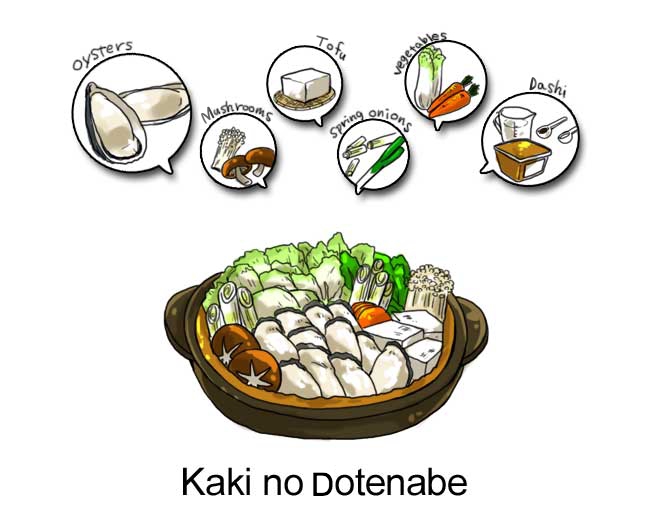
Hiroshima prefecture, bordered by the Seto Inland Sea, is the leading producer of oysters in Japan. The oysters here are large, thick, and juicy with a clean, briny flavor that tastes delicious both raw and cooked. While there are many different ways to enjoy oysters in Japan, one dish particular to Hiroshima is kaki no dotenabe—a hot pot of oysters simmered in broth with vegetables, broiled tofu, and other ingredients. The inside of the pot is lined with sweet miso, so you can adjust the flavor as you like, and it tastes great with a squeeze of fresh lemon.
Tofu Chikuwa (Tottori)
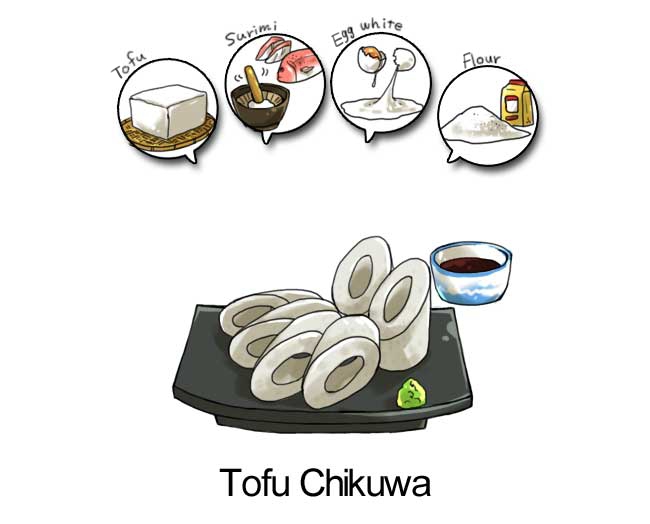
Chikuwa is a tube-shaped food usually made from ground fish paste (surimi), but in Tottori prefecture—where a famous saying from the Edo period goes “Eat tofu instead of fish”—there is a special tradition of making chikuwa with tofu. Much like bara-zushi from Okayama, Tottori’s tofu chikuwa originated because commoners were not allowed to enjoy the local fish from the Sea of Japan under the feudal system. Compared to regular chikuwa, tofu-based chikuwa has a delicate flavor and mild soybean aroma that goes well with a ginger soy sauce.
Visit the Chugoku Region to Try Succulent Snow Crab, Flavorful Hiroshima Okonomiyaki, Fresh Oysters and More
The Chugoku region may be off the beaten path for most travelers, but it has much to offer for those seeking good food and memorable sights—from the more industrialized Hiroshima to the rural coastline along the Sea of Japan. If you’re in the area, or planning a visit, be sure to check out the many diverse restaurants of Chugoku prefectures.



